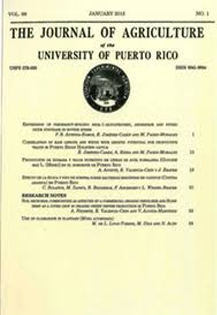Abstract
When weather conditions limit the production of traditional crops such as sorghum and corn for forage conservation as silage, sunflower (Helianthus annuus) represents an alternative for ruminant feeding, due to its great biomass production capacity and high protein and energy values. The dry matter yield (DMY), nutritional value, fermentation characteristics (FC) and aerobic stability (AS) of silages of sunflower forage (cv. ‘Camaro’ and ‘Torino’) at phenological growth stages (PGS) R6 and R8, were evaluated. A randomized complete block design (RCBD) was used with four replications in a split plot arrangement. The forages were ensiled in microsilos of 50 L capacity. There was a difference (p < 0.05) in forage dry matter (DM) content between PGS R6 and R8 (15.4 vs. 23%), but not between cultivars. However, there was no difference (p > 0.05) in DMY (7.1 Mg/ ha) neither between cultivars nor PGS. Silage FC were determined in ‘Torino’ only and differences were found between R6 and R8 in DM (14 vs. 22%), neutral detergent fiber (43 vs. 50%), total digestible nutrients (68.5 vs. 66.2%), net energy for lactation (1.60 vs 1.55 Mcal/kg DM) and relative feed value (136 vs. 109), but not in crude protein (11%) or acid detergent fiber (36%) levels. Regarding FC, PGS R6 and R8 differed (p < 0.05) in pH (3.8 vs. 4.3), lactic (12.5 vs. 8%) and acetic acid (2.4 vs. 1.8%), but not in butyric acid (0.7%), propionic acid (0.09%) nor ammonia nitrogen as a percentage of total nitrogen (5.75%). Phenological growth stages did not affect the AS of ‘Torino’ silage. The duration of aerobic exposure influenced silage pH and temperature values, showing differences after the first day. The PGS R6 showed better conditions for the preparation of sunflower silage. Improved fermentation might be achieved through the use of additives.

